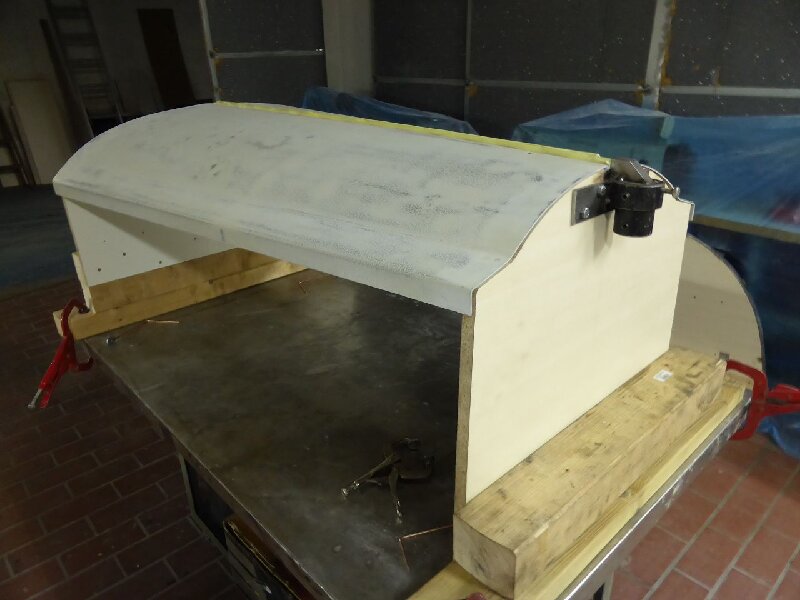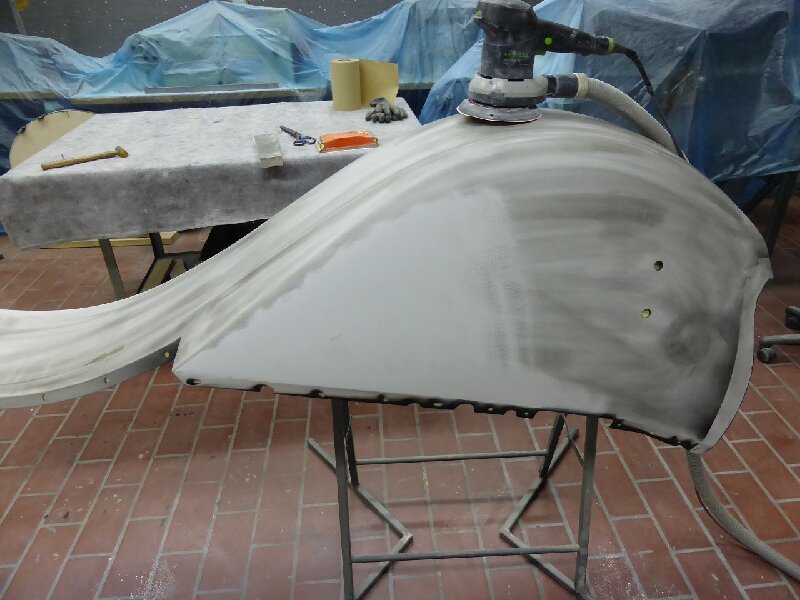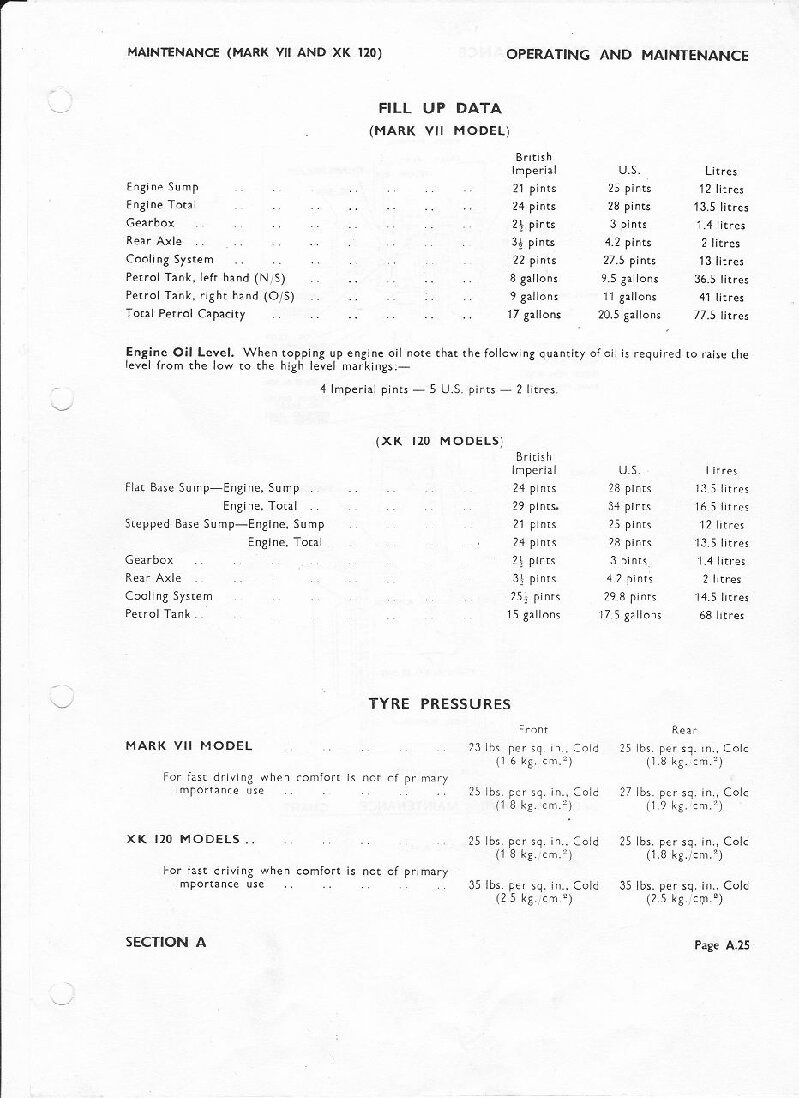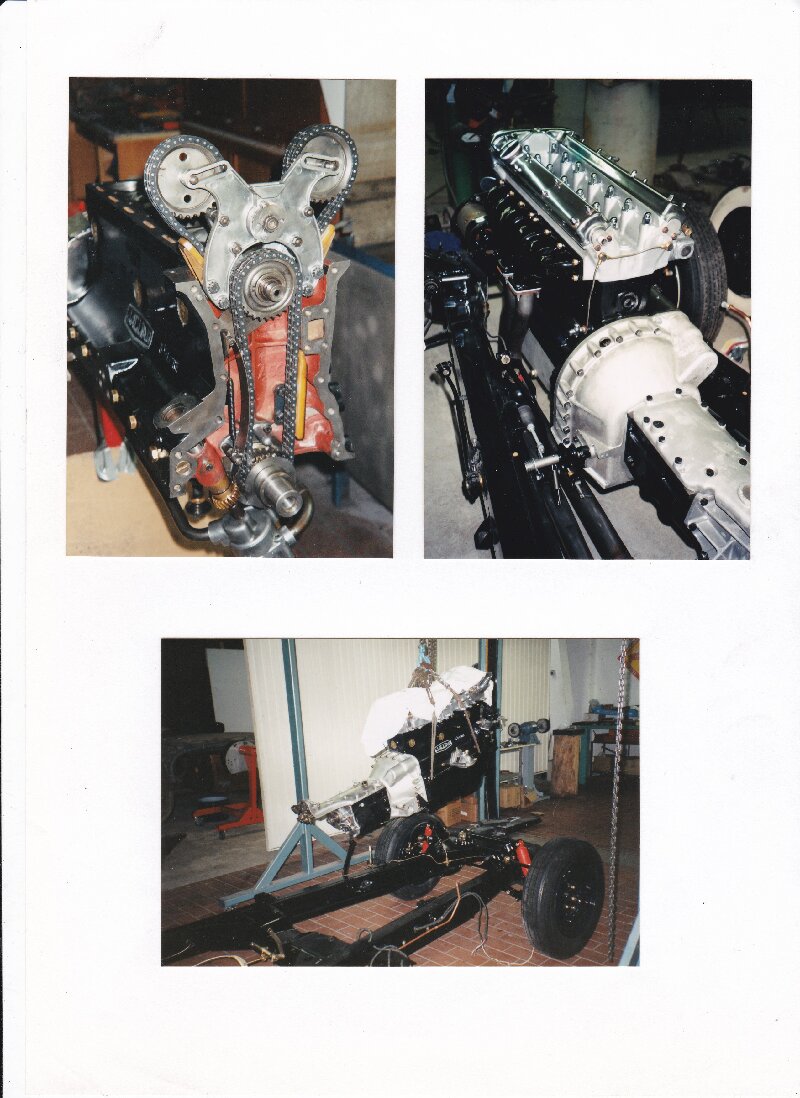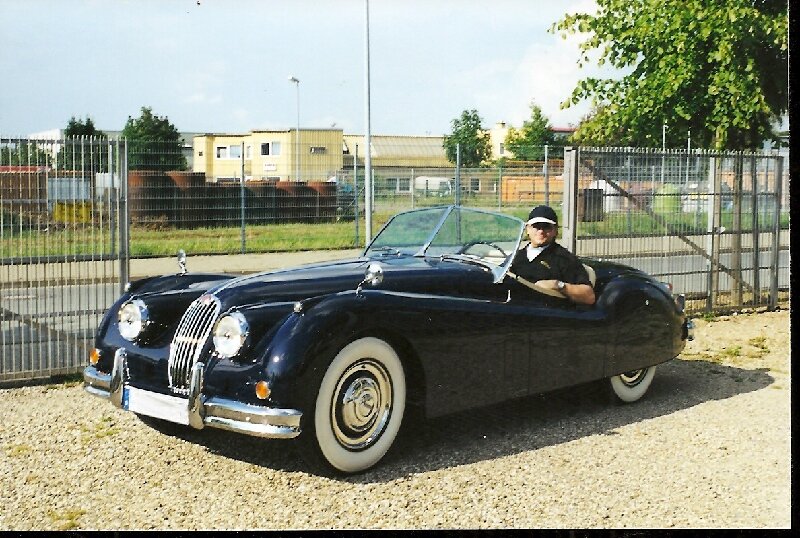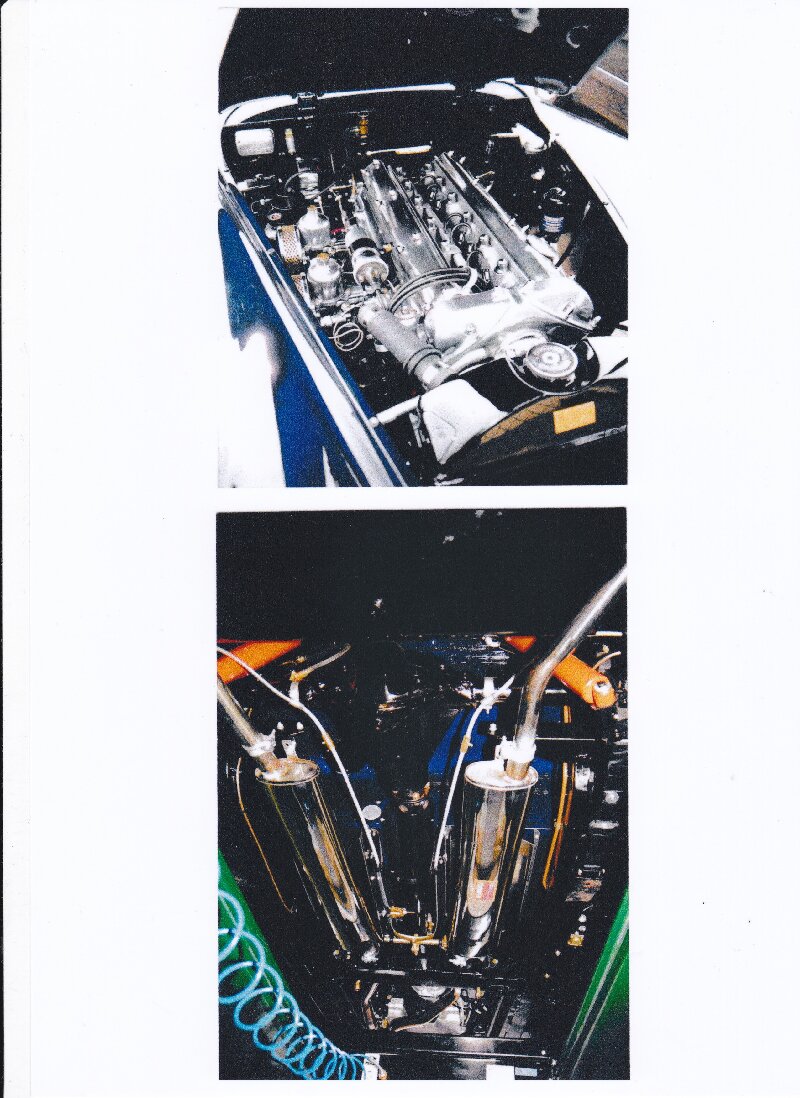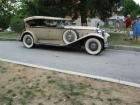|
Re: 1924 Sport 136
|
||||
|---|---|---|---|---|
|
Home away from home

|
The whole car must have been left outside for a long time. All sheet metal parts had deep rust pits. Simply filling these up with putty would not make sense because later the putty could break in deeper in these areas than in other areas, which would lead to the typical “orange skin”. In addition, putty on the side parts of the hood in the area of the ventilation slots was out of the question anyway. So I painted all surfaces with epoxy spray filler using a spray gun and then sanded these layers back down to the sheet metal. I repeated this twice until all the rust scars were filled. I then placed the parts in the sun for 8 hours a day for 2 weeks last summer. If there is no painting booth with heating, this is one way to shrink the spray filler/putty to such an extent that further paint build-up should not cause any problems. I'm really very happy that I'll never have to do this work again... like grinding the fan slots or grinding out the fender beads.
Karl Attach file:  k-P1040195.JPG (136.91 KB) k-P1040195.JPG (136.91 KB)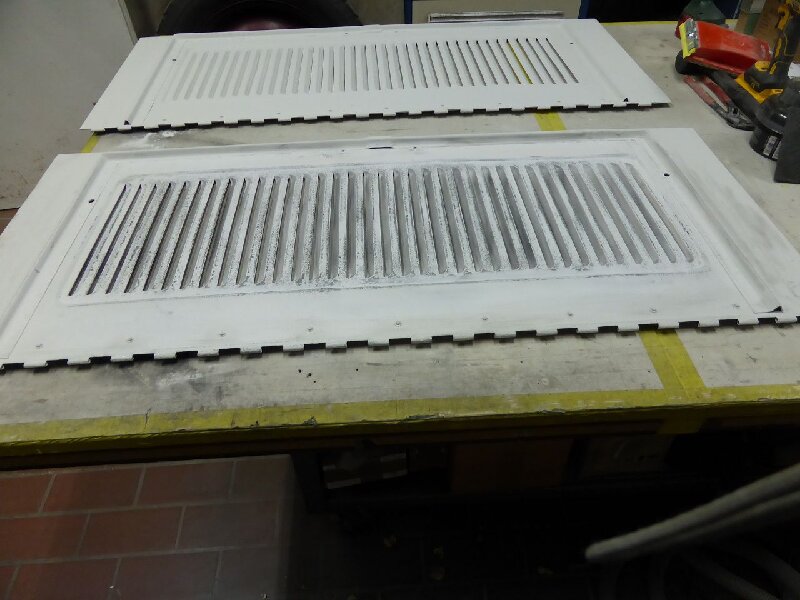  k-P1040198.JPG (138.86 KB) k-P1040198.JPG (138.86 KB)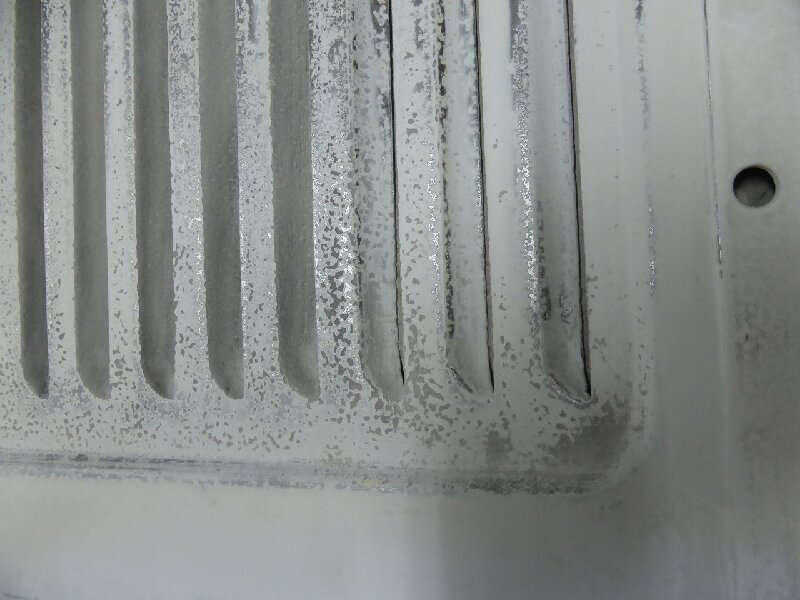  k-P1040200.JPG (125.55 KB) k-P1040200.JPG (125.55 KB)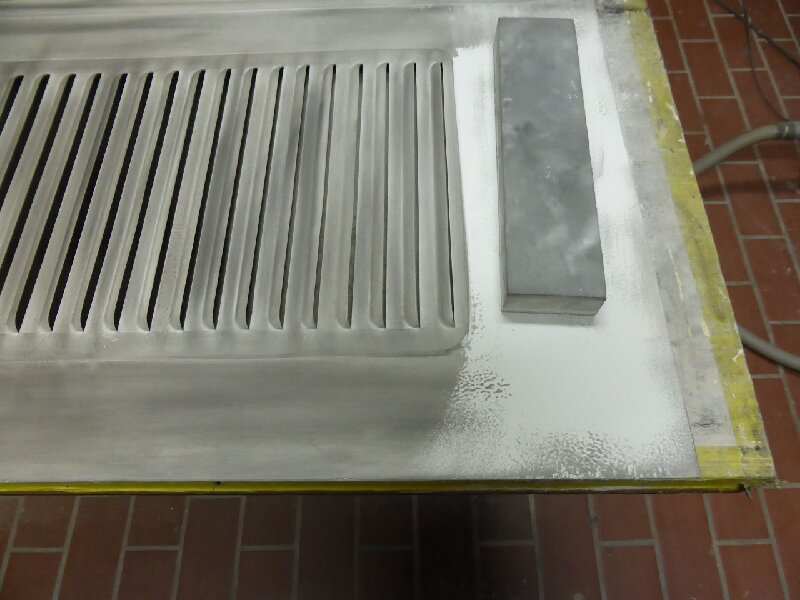  k-P1040201.JPG (159.06 KB) k-P1040201.JPG (159.06 KB)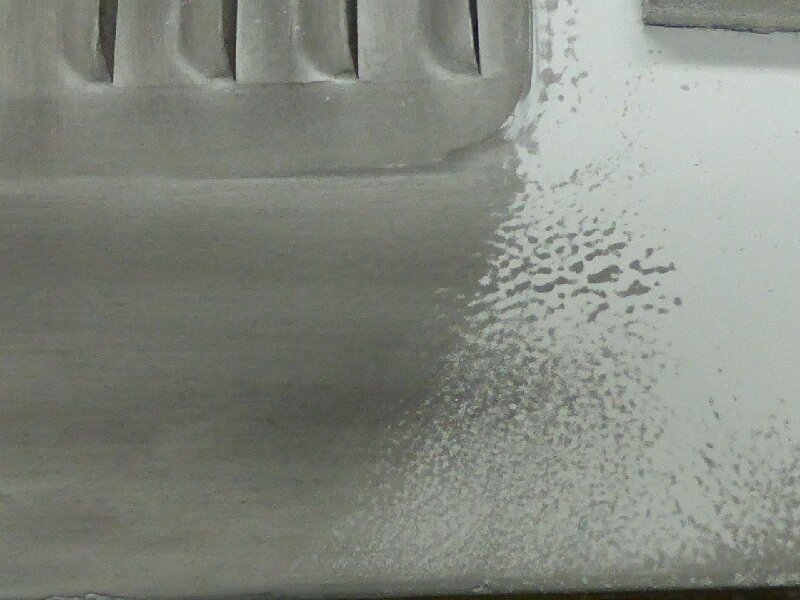
Posted on: 2/7 8:09
|
|||
|
||||
|
Re: 1924 Sport 136 Muffler Dimensions
|
||||
|---|---|---|---|---|
|
Home away from home

|
Dear Packard Friends.
I'm urgently looking for the dimensions for the muffler of my 1924 Packard Single 8 (Sport Phaeton 136). I asked about all the options that I knew of and that were mentioned to me by members in the Packard forums. Unfortunately, even the well-known museums and administrators of blue prints on Packard vehicles have no data on my 1924 8-cylinder model. There is someone who has this data. But because he rebuilds and sells this silencer himself, he cannot release the dimensions because he is afraid that some 75-year-old dummy in Germany could pass on this data and sales for the sale of this !924-1926 component could at least collapse and so on Its sales/profits are at risk. Of course I understand that. But I would have the opportunity to buy one of his replicas. Unfortunately, the costs for purchase, shipping, + 10% customs duty + 19% import sales tax are utopian for me and not included in my restoration budget. It is my principle to recreate all components myself that can be recreated. And this silencer is a relatively simple construct and it is no problem for me to recreate it. What I'm missing are the exact dimensions of the individual components of the muffler, which can be seen on page 81 of the Parts List 1924-1926. Of course, I don't expect anyone who has such an original silencer installed in their 1924-26 Packard to remove it and disassemble it to give me the dimensions. But maybe there is someone who knows where such a muffler can be found in a removed state. But if this is not possible, perhaps a very good copy from an original parts list would help. The copies I have are copies of copies and are not very suitable for enlargement. Since the components are not drawn but photographed, the images could be enlarged so that the other dimensions and data could be determined using reference dimensions. The most important dimensions are the dimensions of the two inner tubes and here the diameters of the holes in these tubes, as well as the number and location of the holes. The two inner tubes form 3 chambers throughout the entire silencer. Due to the different position and the different number of holes in the two tubes, the clocked sound waves are superimposed in anti-phase in the chambers, thus reducing (dampening) the sound. Construction and material also play an important role in the sound and thus the vehicle-specific and typical sound produced by the various automobiles. Therefore, the dimensions are essential for a usable replica. So, I'm grateful for every hint. Karl Attach file:  k-1924 Muffler- Kopie.png (1,254.70 KB) k-1924 Muffler- Kopie.png (1,254.70 KB)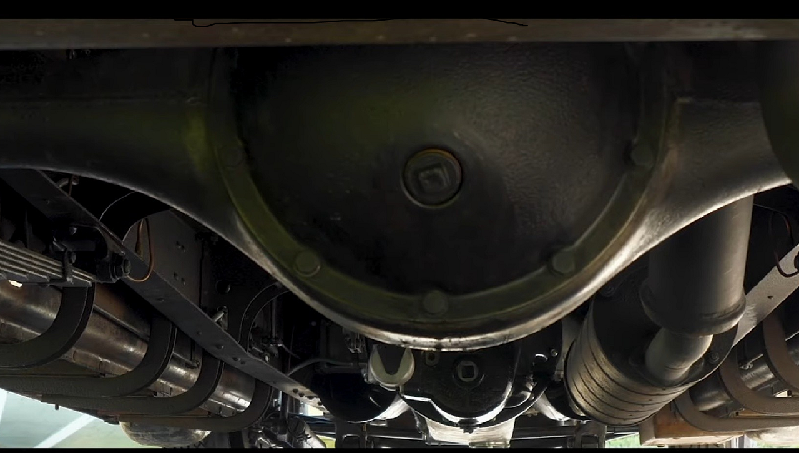  k-Muffler Skitze - Kopie - Kopie.png (1,266.66 KB) k-Muffler Skitze - Kopie - Kopie.png (1,266.66 KB)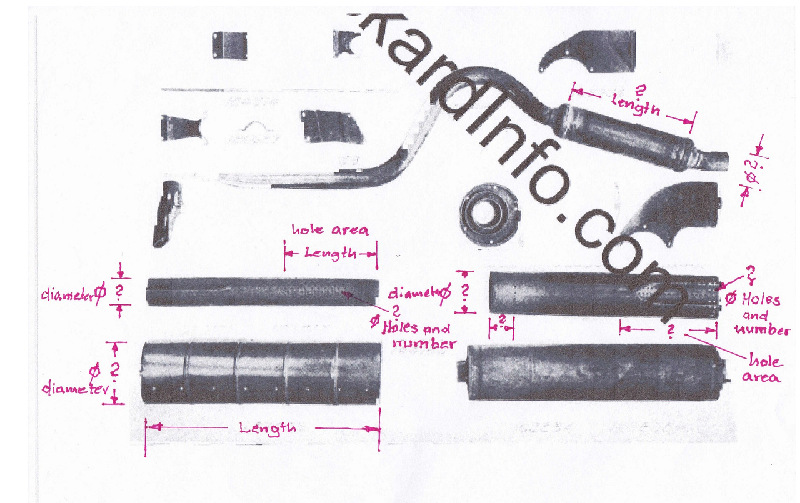
Posted on: 2/2 6:01
|
|||
|
||||
|
Re: 1924 Sport 136
|
||||
|---|---|---|---|---|
|
Home away from home

|
Dear Packard friends,
Today I had a little bit time and read my previous posts, which were translated from German language into English by using the GOOGLE TRANSLATOR. Even with my lousy knowledge of English, I noticed that there were a few things wrong with this translations. So I translated the English translation of some posts back into German. What came out of it ... really surprised me. I can imagine that some of you probably shook your head when you read these texts. It seems as if the proportion of possible „AI“ in this translator is infinitesimally very very small. In no case can the “I” have anything to do with „Intelligence“. So I ask all readers once again to please be patient when reading my posts. If anyone knows a translator... even if it costs something... which is better than this one from GOOGLE, please give me a hint about it. In the meantime, I will try to eliminate the worst errors through “back translation” (German-English >>> English-German) and hope this will help. Karl
Posted on: 1/20 11:37
|
|||
|
||||
|
Re: New member with new Packard
|
||||
|---|---|---|---|---|
|
Home away from home

|
Hi Stan,
if I hadn't found my 1924 Sport Phaeton, I would be extremely jealous of your 1932 903 Phaeton. How about you introduce yourself and your automobile in the “Pre-War” forum and “throw yourself to the wolves” there. Either way, you'll find that this Packard information page can be extremely helpful. In any case, the members have helped me a lot in many cases to save time and find the right answers and how and what to do. In order to avoid driving from one breakdown to the next when purchasing a Packard of this age, a detailed inventory of all technical components is extremely important. Especially if no clear and verifiable documents were provided for the vehicle. And if the car hasn't been driven for a few years, you'll have a lot of work to do before you can really enjoy the car. For me, it has always been fun to bring a vehicle into top technical condition. If you're lucky with the purchase, you'll be able to have fun with the car very quickly. If you're unlucky, it can take a long time and cost a lot. I keep my fingers crossed that you were a lucky guy. Karl from Germany
Posted on: 1/18 9:31
|
|||
|
||||
|
Re: 1924 Sport 136
|
||||
|---|---|---|---|---|
|
Home away from home

|
Here is a suitcase that I recreated the original for another project.
Attach file:  k-1 - Kopie.JPG (143.54 KB) k-1 - Kopie.JPG (143.54 KB)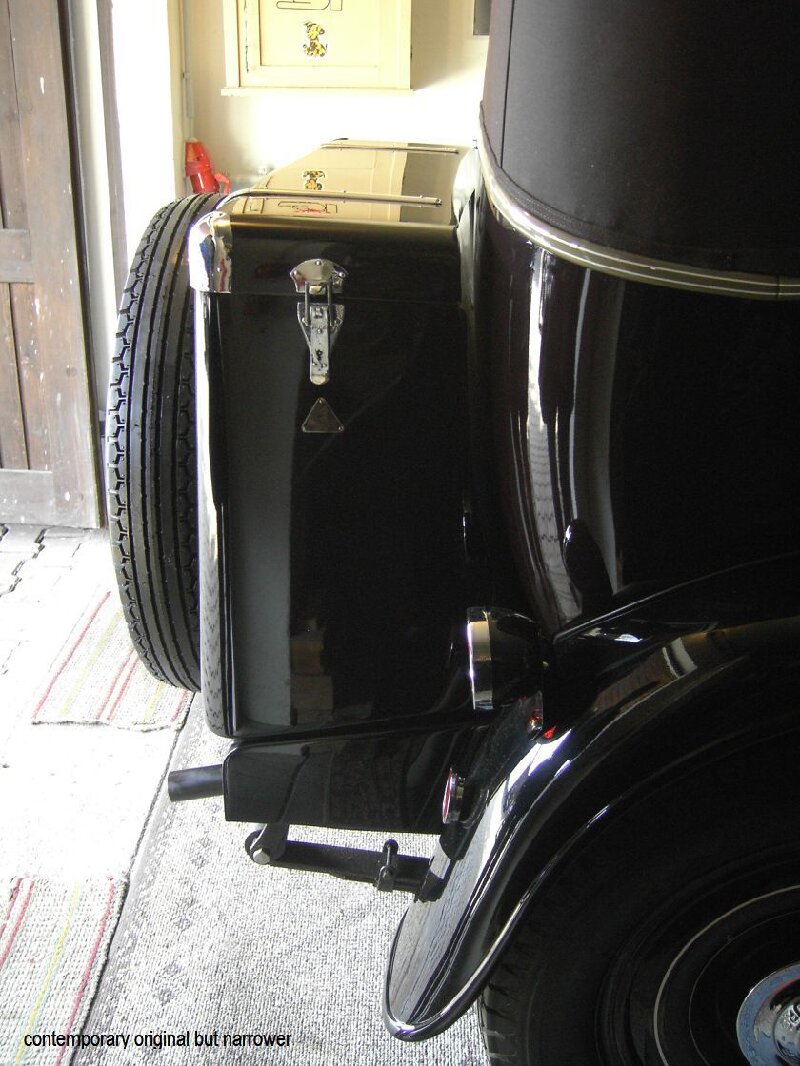  k-2.JPG (262.32 KB) k-2.JPG (262.32 KB)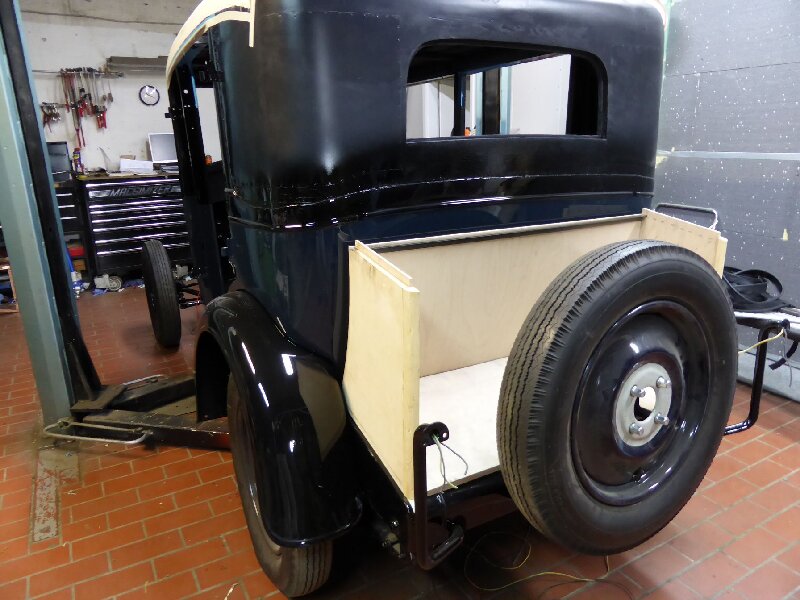  k-4.JPG (197.07 KB) k-4.JPG (197.07 KB)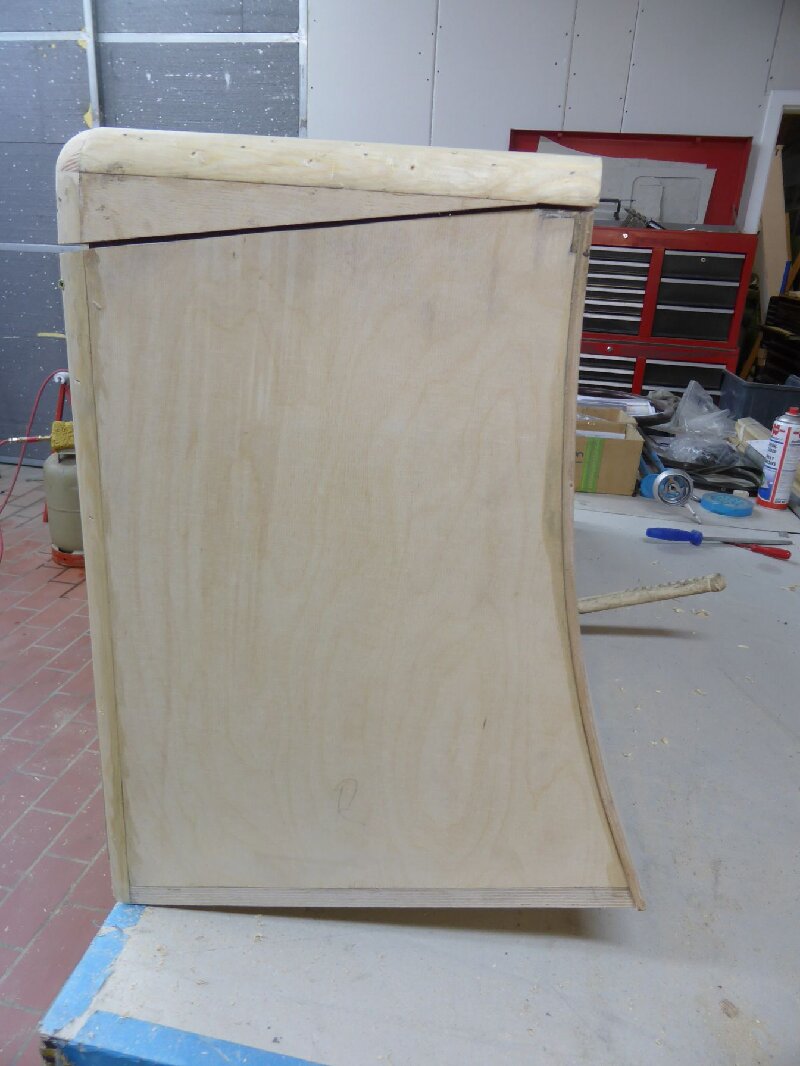  k-p1030077 - kopie.jpg (488.52 KB) k-p1030077 - kopie.jpg (488.52 KB)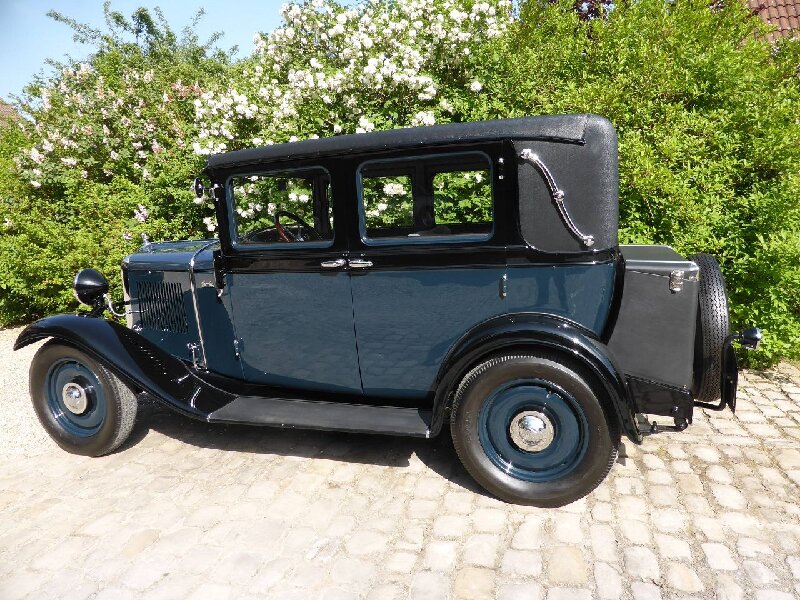
Posted on: 1/16 17:56
|
|||
|
||||
|
Re: 1924 Sport 136
|
||||
|---|---|---|---|---|
|
Home away from home

|
As you can see in the first pictures of my blog, some components were not original. For example the rear and front bumper. The Sport model has rear corners and no full-length bumper. At the front, the connections/holders to the frame were also not original and one of the crossbars was too high, meaning that the additional headlights (Trippe Senior Speedlight) were mounted far too high and therefore too close to the main headlights. A simple conversion was impossible because the front, still original, continuous flat belts were very rusty after sandblasting. Also …. Remake all bumpers. What does this have to do with the body??? …. Well, the car was just too short…..the rear trunk was missing. And that also determines how the rear bumper corners/holders have to be designed. The only question was…..among all the suitcases I found in pictures on this topic on the internet…. and there were quite a few... there wasn't one that wouldn't ruin the overall picture of the "sport"... when viewed from the side. Simply hanging a suitcase on the back as seen on the “1924 Australian Original 136” (… I think everyone knows the vehicle that was recently auctioned…) was absolutely out of the question. We also had to find a case that wasn't too wide in terms of the body, fit between the two "Westinghouse Air Springs" and was only high enough so that the canopy rods could later be placed optimally. The chance to find such a suitcase was like winning the lottery. During the restoration period I searched the Internet from time to time. And… I found the jackpot.
I could hardly believe what someone was offering here in Germany. Because... not only did the suitcase fit in all dimensions, no, it also had a cutout in the area of the petrol filler neck on exactly the right side and at the right height and it would have fit exactly if it weren't for the “Westinghouse Airsprings” had been positioned. But that wasn't a problem because I quickly moved this access a few centimeters. I think this case fits this car really well and the spare wheel can also be installed in a visually good position. Maybe I should change the angle of the holder a little, because I don't really like the almost vertical position of the spare wheel. However, the lid should be able to be opened easily and the bottom of the tire should not protrude too far in front of the connecting line of the bumper corners. Once restored, the suitcase will look something like the one from the “Pebble Beach Winner 1934 Viktoria”. I already have the material for this here. They are the remains of the roof covering of a vehicle that I restored frame off some time ago and which was missing the original case, which I recreated based on the original template. So if I hadn't found a suitable suitcase, I would have probably built another one myself. Karl Attach file:  k-Koffer für !924 1.jpg (82.48 KB) k-Koffer für !924 1.jpg (82.48 KB)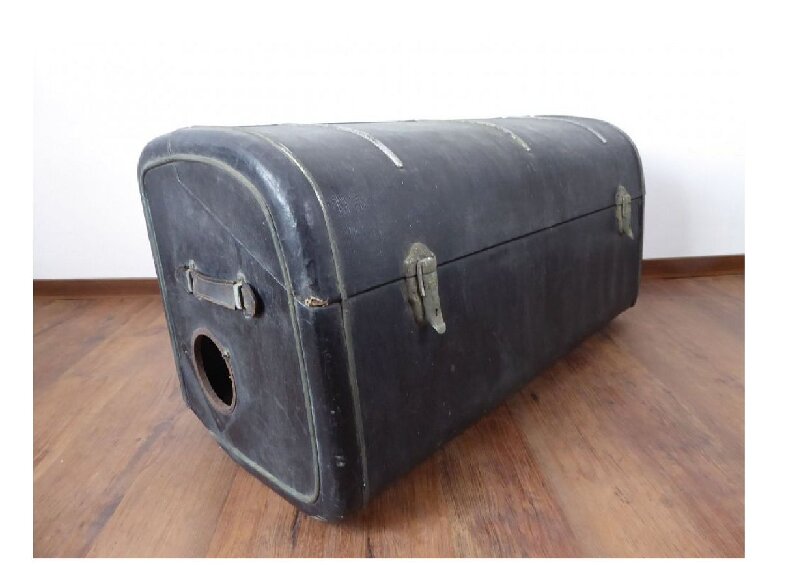  k-Koffer für 1924 3.jpg (105.59 KB) k-Koffer für 1924 3.jpg (105.59 KB)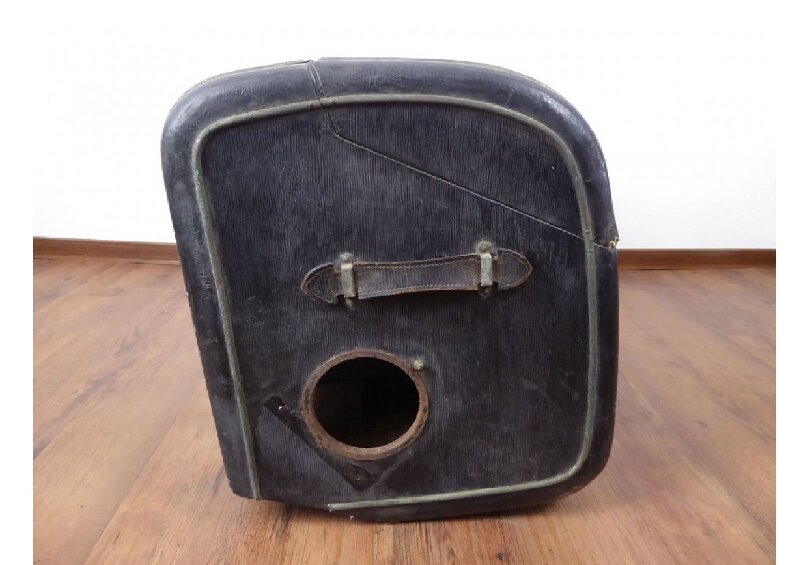  k-P1020726.JPG (838.85 KB) k-P1020726.JPG (838.85 KB)  k-P1030609.JPG (279.56 KB) k-P1030609.JPG (279.56 KB)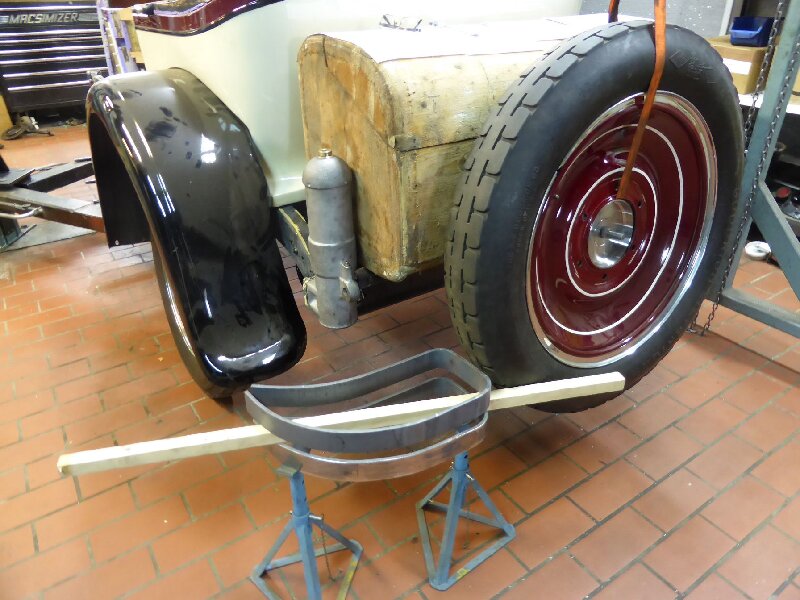  k-P1030647.JPG (286.77 KB) k-P1030647.JPG (286.77 KB)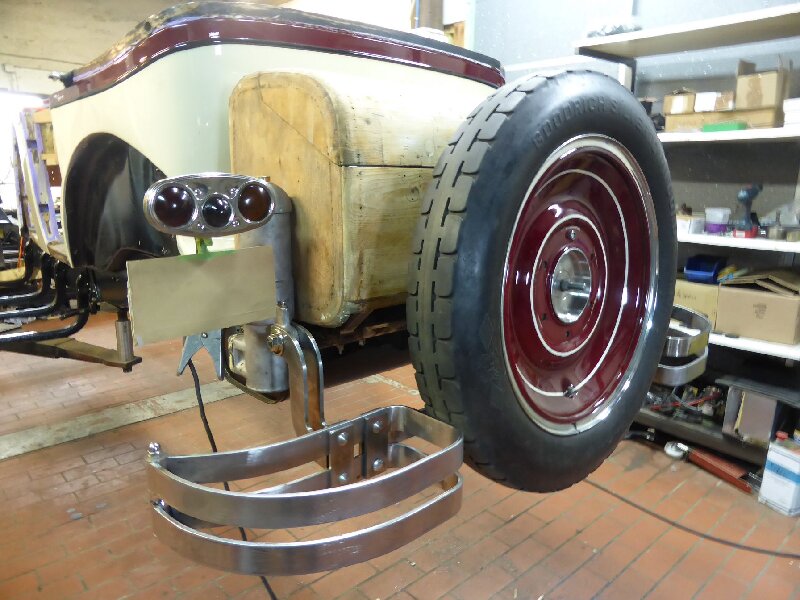  k-Kofferbezug Vinyl_Leder.jpg (157.85 KB) k-Kofferbezug Vinyl_Leder.jpg (157.85 KB)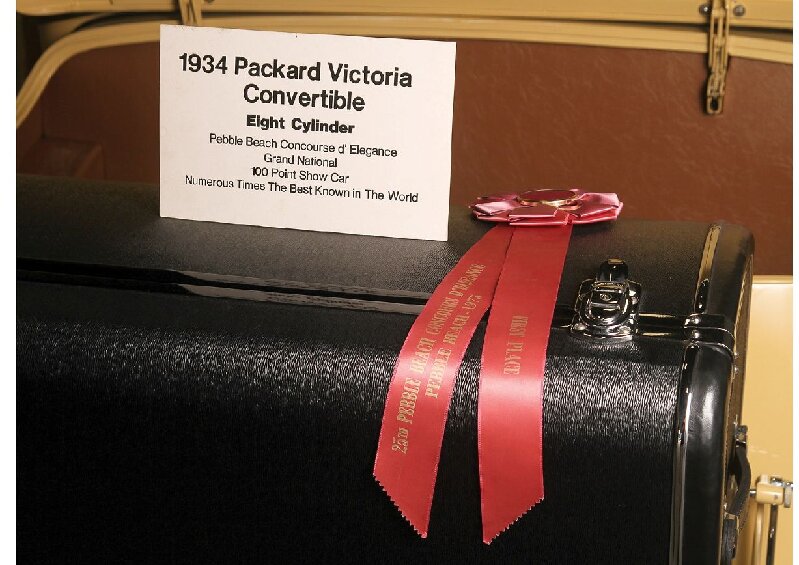
Posted on: 1/16 17:45
|
|||
|
||||
|
Re: BigKev's 1937 115-C Convertible Coupe
|
||||
|---|---|---|---|---|
|
Home away from home

|
Kevin,
you are right, but then you got an engine out of the 1950th and early 60th. I think the E-Type 2+2 had a oil capacity of a little bit over 2 Gal. But my Engine ... and that was where I was talking about... has 13,5 ltr. and that is .... ok not 4 Gal. .... but 3,55 gal. I should better look in my Books. But thats what I remember rouhgly as I wrote this. Karl
Posted on: 1/13 12:55
|
|||
|
||||
|
Re: BigKev's 1937 115-C Convertible Coupe
|
||||
|---|---|---|---|---|
|
Home away from home

|
Hi Howard,
I think the weak point with this engine is that this engine needs care and attention. As a long stroker (?), who lubricates his cylinders by immersing the crank drive in the oil sump, he needs every drop of oil up to the maximum level. The assumption that 4 gal. There is enough oil to avoid having to constantly worry about the oil level... is wrong. Does anyone remember the 50s and 60s when it was common for the gas station attendant to always ask if he should check the oil level? There was a reason for that at this time. Lubrication technology, the combustion of part of the oil and the incontinence of the engines, which was not uncommon at this time. Comparing this engine to a 1950s-60s small block is... like comparing a farm horse to a racehorse. This Jaguar 6 cylinder is a reliable and technically advanced power unit for its time. It's not without reason that this engine won the 24 Hours of Le Mans 3 years in a row (1951-53). I personally know 3 Jaguar owners who didn't pay this engine the attention it needed. The consequence of oil levels being too low was piston seizing. And yes, ... that's certainly more expensive than converting a Chevy small-block. Especially since only a few workshops in the USA have dared to overhaul this engine. It's really not rocket science. However, intensive information about design features in the engine is required. For example, pins/bolts in the area of the chain control should not be lost and should not be forgotten to reinsert them during assembly. But there are very good books in English that describe all of these problems in great detail. The parts necessary to overhaul the engine have been available at all times and are in no way more expensive than comparable parts from GM. But the time required by an American workshop without experience with these engines was definitely significantly higher than that of branded workshops, which simply cannot be found on every corner in the USA. And a Porsche, Mercedes, BMW, or Jaguar owner/driver basically has plenty of money and is then presented with corresponding invoices/cost estimates. It is of course much easier and more profitable to install a small block. A friend of mine brought such an XK 140 OTS conversion from California. And an “original” Jaguar engine. It then turned out to be a 3.8 liter MKII engine that could only be scrapped. I then restored this car to its original condition, thereby multiplying its value on the European market. Finally, maybe just this much... the SU carburetors should be in good mechanical condition. The vacuum pistons should be able to work cleanly and freely. The needles in these pistons should actually belong to this engine and this type of carburetor. There are a multitude of needles that at first glance all look alike but are not necessarily so. There are tables and lists. The same applies to the main jets. The float level should be set correctly. New needle valves are a must. If the float or nail is hanging, the pump may be pumping gasoline through the overflow pipes under the car. The carburettors must absolutely be synchronized. Everything should be as correct as possible because only then will the engine work cleanly and not emit any black clouds. Karl
Posted on: 1/13 11:08
|
|||
|
||||
|
Re: BigKev's 1937 115-C Convertible Coupe
|
||||
|---|---|---|---|---|
|
Home away from home

|
Kevin,
this engine has a very heavy cast block as you know. All Jaguar 6 cylinders maintain temperature quite well under normal driving conditions. And as long as there is enough air pressure to dissipate the heat in the engine compartment. Because that is the real problem and not the cooling of the water. When this engine is working under load and in summer temperatures, the block and cast manifold certainly heat up. Also the heated 4 Gal. Engine oil doesn't make this situation any better. If the air cannot be removed from the engine compartment quickly enough in this condition, overheating cannot be avoided. Especially when, after a fast journey, the car has to slow down, stop and go... or even stop. That's why almost all owners of such vehicles (XK 120...3.5 liters, 140, 150...3.8 liters, MK2...3.8 liters up to XJ4...4.2 liters) usually have an electric fan installed like "kevinpackard" it showed in your blog. And yes, the engine compartment in your Packard has a larger volume and additional ventilation slots that the Jaguar vehicles do not have. But still I am sure that the very high heat that this engine gives off with the shortened fan blades You want to use... cannot be drained out of the engine compartment. In your case, I would try to lead the lower water connection downwards out of the water tank of the radiator and thus make it possible to close the large wing of the 3.8 liter engine (XK 150). Mount it. Or first try with the sucking electric fan inside. It would also be clarified whether the smaller wedge disk can also be mounted on the water pump. You have a number of good suppliers for these Jaguar vehicles in the USA. In 10 years I will I have rebuilt 5 of these engines and vehicles and know the strengths and weaknesses of these model types very well. I drove my Frame OFF restored XK 140 for five years without any problems and with a lot of fun. By the way, I bought it in Hershey in 1995 with only one previous owner and in original condition, but rusted through in all the usual places. But all the original parts were there. Karl
Posted on: 1/12 16:24
|
|||
|
||||

